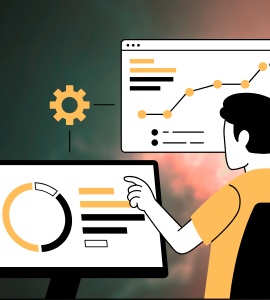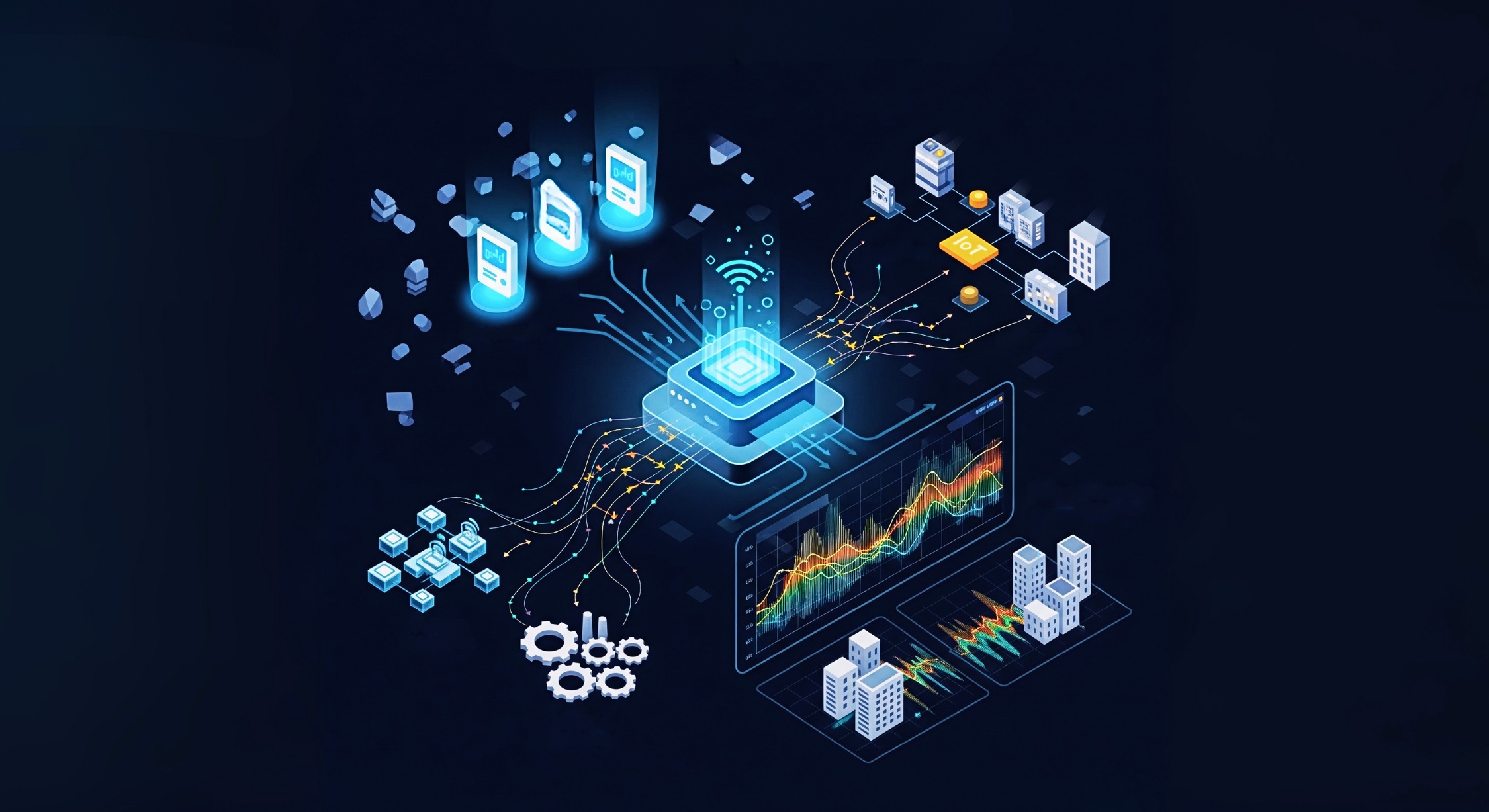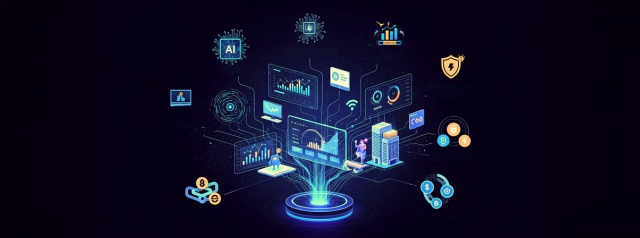“No longer just a utility, energy now acts as a language. Every machine, building, and process is speaking in data. The organizations that learn to listen, interpret, and act on that language won’t just cut costs, they’ll lead the future of sustainable business.”
At Experion Technologies, we specialize in building custom energy management systems that enable organizations to monitor, analyze, and optimize energy usage in real time. Our solutions are built with performance, scalability, and compliance at their core, designed not just to capture energy data, but to convert it into actionable intelligence. Whether it’s a global manufacturing facility, a distributed real estate portfolio, or a smart healthcare campus, we help enterprises unlock measurable efficiency, reduce costs, and deliver on ambitious sustainability and regulatory goals.
Key Highlights
- What is Energy Management Software?
- Types of Energy Management Tools
- The Role of Energy Data Management Software in Modern Enterprises
- Custom Energy Management Software Development: Tailoring Solutions for Unique Needs
- Key Features to Look for in an Energy Management Software
- How Energy Management Software Enables Regulatory Compliance and Sustainability Goals
- Benefits of Implementing Energy Management Software
- Challenges in Adopting and Scaling Energy Management Software
- Emerging Trends in Energy Management Software
- Choosing the Right Energy Management Software for Your Business
- Conclusion
- Key Takeaways
Energy is no longer just a utility expense, it’s a boardroom conversation. With volatile energy prices, heightened investor focus on Environmental, Social, and Governance (ESG) metrics, and intensifying global climate commitments, organizations are under pressure to move beyond basic utility management. They need systems that not only track usage but predict patterns, optimize performance, and inform strategic decisions.
That’s where software for energy management comes into play. These platforms provide the digital backbone for an enterprise’s energy strategy, integrating IoT sensors, smart meters, automation engines, and analytics dashboards into one cohesive, intelligent ecosystem. From reducing operational waste to supporting Net Zero initiatives and regulatory reporting (like ISO 50001), EMS tools empower businesses to take control of their energy story.
But off-the-shelf tools often fall short. Fragmented systems, lack of integration, and generic features can limit visibility and scalability. That’s why more organizations are now turning to custom energy management software development, purpose-built to suit their specific environments, infrastructure, and energy goals.
At Experion, we’ve seen firsthand how tailored platforms can reshape operational thinking. For one industrial client, real-time analytics and automated workflows slashed energy overheads by 25% within a year. For another, predictive insights transformed asset planning and reduced compliance risk.
In today’s energy-conscious world, software is no longer just a support tool, it’s the driver of smarter, more sustainable operations. And if done right, energy management can be the lever that aligns cost savings, compliance, and climate action into a single, unified strategy.
Ready to take control of your energy data?
Connect with us to build a platform that works for you.
What is Energy Management Software?

Energy Management Software is a powerful digital platform that enables organizations to monitor, analyze, and optimize their energy consumption with precision. Rather than relying on manual tracking or siloed systems, EMS brings energy data from across an organization into a single, accessible interface — making it easier to understand usage patterns, identify inefficiencies, and make data-driven decisions.
These platforms typically pull information from various sources including smart meters, IoT devices, industrial control systems, and building automation networks. Once collected, the software processes and visualizes this data in real time or through historical trend analysis, providing actionable insights for operations, finance, and sustainability teams alike.
Energy management software acts as a central nervous system for your energy infrastructure. It enables facilities managers to reduce waste, allows sustainability leaders to meet compliance and emissions targets, and empowers decision-makers to implement smarter cost-saving strategies.
Types of Energy Management Tools
Energy management solutions vary depending on the scale, environment, and operational focus of an organization. Here are the three most common types:
- Building-Level Systems
These solutions are designed to manage energy within individual buildings or facilities. They focus on optimizing systems like HVAC, lighting, occupancy sensors, and other utilities to create energy-efficient environments. Ideal for commercial real estate, campuses, and smart buildings. - Industrial Energy Management Systems
Tailored for manufacturing and production environments, these platforms track and manage energy usage across equipment, assembly lines, and industrial processes. They help reduce downtime, improve machine efficiency, and align energy use with production schedules. - Enterprise-Wide Platforms
Designed for organizations operating across multiple sites or geographies, these systems provide a unified view of energy performance across the entire enterprise. They support strategic energy planning, portfolio-level reporting, and high-level ESG tracking.
Modern energy management systems software supports both real-time and historical data analysis. This dual capability ensures that organizations can respond immediately to issues such as energy spikes or equipment faults, while also reviewing long-term patterns to inform budgeting, upgrades, and sustainability initiatives.
Whether you’re running a single building or a global portfolio, energy management software helps turn raw usage data into meaningful business outcomes, from cost reduction and carbon tracking to predictive maintenance and policy compliance.
The Role of Energy Data Management Software in Modern Enterprises
 In today’s data-driven business environment, energy consumption isn’t just a number on a utility bill, it’s a critical performance metric tied to cost, compliance, and corporate sustainability goals. However, with multiple sites, systems, and assets consuming energy at varying levels throughout the day, capturing and making sense of that data can be complex.
In today’s data-driven business environment, energy consumption isn’t just a number on a utility bill, it’s a critical performance metric tied to cost, compliance, and corporate sustainability goals. However, with multiple sites, systems, and assets consuming energy at varying levels throughout the day, capturing and making sense of that data can be complex.
That’s where energy data management software comes in. These systems collect, centralize, and interpret energy usage data in real time, giving organizations a clear view of how, when, and where energy is being used. By visualizing patterns and anomalies, businesses can move beyond reactive energy control toward predictive, performance-oriented energy management.
Key Features of Energy Data Management Software:
- Smart Meter Integration
Gain direct, real-time access to granular energy usage data from across buildings, equipment, or production lines, removing blind spots and enabling immediate corrective action. - Automated Data Acquisition
Eliminate manual data entry or reporting delays by automatically capturing energy metrics from multiple systems and formats, increasing accuracy and freeing up operational teams. - Forecasting and Anomaly Detection
Use intelligent algorithms to anticipate peak loads, detect irregular consumption patterns, and mitigate risk before inefficiencies drive up costs. - Energy Data Analytics
Translate raw data into actionable insights that directly inform sustainability strategies, ESG reporting, and corporate energy-saving initiatives.
Custom Energy Management Software Development, Tailoring Solutions for Unique Needs
Off-the-shelf energy management systems can offer a starting point, but they often lack the flexibility and precision required by businesses with complex infrastructures, diverse energy sources, or industry-specific compliance demands. This is where custom energy management software development becomes a strategic advantage.
Custom-built platforms are designed around your business’s unique operational structure, energy usage profile, and digital maturity. They not only align with existing infrastructure but also adapt to future changes, helping businesses stay resilient and agile.
Benefits of Custom Energy Management Software:
- Tailored, Industry-Specific Features
Whether you’re managing a smart manufacturing plant or a multi-campus education network, custom EMS can be designed to reflect your workflows, reporting needs, and KPIs. - Seamless Integration with Legacy Systems or IoT Infrastructure
Avoid rip-and-replace disruption by integrating new software with existing sensors, metering tools, and enterprise platforms. - High Scalability and Flexibility
Easily expand the system to new locations, devices, or use cases as your energy goals evolve over time.
Phases of Custom Software Development for Energy Management:
- Requirements Gathering
In-depth workshops and audits to understand your operational structure, energy footprint, compliance landscape, and technical ecosystem. - Design and Prototyping
Translating requirements into intuitive, role-specific user interfaces with clearly mapped data flows and workflows. - Development and Testing
Agile development cycles with continuous testing to ensure accuracy, performance, and security across all components. - Deployment and Support
Smooth rollout with ongoing support, version updates, user training, and long-term analytics optimization.
Use Cases Across Industries:
- Manufacturing
Monitor machine-level energy consumption, detect inefficient processes, and align usage with production schedules for better control and reduced waste. - Real Estate
Optimize HVAC systems, lighting controls, and tenant usage patterns to reduce building-wide energy costs and improve tenant satisfaction. - Education
Track energy use across multiple buildings and campuses, identify inefficiencies, and support student-driven sustainability programs with real-time data. - Healthcare
Ensure continuous uptime for mission-critical systems while identifying opportunities to reduce overhead without compromising care quality.
Your energy is talking.
We’ll help you listen, understand, and act. Start the conversation today.
Key Features to Look for in an Energy Management Software

Choosing the right energy management software can be a pivotal decision for any organization seeking to optimize energy usage, control costs, and meet sustainability targets. The ideal solution should offer a comprehensive view of your operations while delivering actionable insights that empower your teams to take control in real time.
Here are the essential features to look for:
- Centralized Dashboard for All Facilities
A unified interface that offers visibility across all locations, assets, and energy touchpoints, helping teams monitor performance holistically and respond quickly to issues. - Real-Time Monitoring of Consumption and Performance
Continuous tracking of energy use across systems, equipment, or sites allows for immediate intervention when consumption patterns deviate or unexpected spikes occur. - Predictive Analytics to Prevent Wastage
Advanced analytics can forecast demand, anticipate load shifts, and highlight inefficiencies before they turn into losses, enabling smarter energy planning. - Automated Reporting and Compliance Tracking
The ability to generate accurate, real-time reports aligned with regulatory requirements simplifies audits, reduces human error, and ensures timely documentation. - System-Wide Automation Capabilities
From turning off idle equipment to scheduling optimized operation windows, automation ensures energy-saving actions are consistently executed without manual intervention. - Cloud Support and Mobile Accessibility
Cloud-based infrastructure ensures scalability, security, and easy access, while mobile-friendly dashboards empower on-the-go decision-making and monitoring.
At Experion, we bring all these capabilities into a single, cohesive platform, purpose-built to scale with your needs and support smarter, faster energy decisions across your enterprise infrastructure.
How Energy Management Software Enables Regulatory Compliance and Sustainability Goals
 Today’s regulatory landscape is rapidly evolving, and organizations are expected to not only manage energy more efficiently but also demonstrate their environmental responsibility. Energy management systems play a critical role in aligning operational performance with global standards, corporate ESG frameworks, and sustainability mandates.
Today’s regulatory landscape is rapidly evolving, and organizations are expected to not only manage energy more efficiently but also demonstrate their environmental responsibility. Energy management systems play a critical role in aligning operational performance with global standards, corporate ESG frameworks, and sustainability mandates.
Here’s how the right software helps organizations meet compliance and achieve long-term sustainability:
- ISO 50001 and GHG Protocol
Built-in frameworks help align energy management practices with recognized international standards, ensuring consistent, auditable processes that support certifications and regulatory reporting. - ESG Reporting
Energy management software automates the collection and reporting of key environmental performance indicators, enabling organizations to accurately disclose their energy metrics as part of broader ESG initiatives. - Energy Audits and Documentation Support
With centralized data, automated logs, and detailed analytics, audits become significantly easier to conduct and defend, reducing compliance risks and increasing transparency. - Net Zero Goals
By identifying patterns of excess consumption, quantifying savings opportunities, and measuring carbon output, EMS platforms help businesses define and execute clear, measurable steps toward achieving net-zero emissions.
In short, energy management software goes beyond day-to-day operations. It becomes an essential tool for businesses looking to stay compliant, prove their environmental leadership, and drive a smarter, greener future.
Benefits of Implementing Energy Management Software
The adoption of energy management software can be a game-changer for organizations aiming to become more cost-efficient, operationally agile, and environmentally responsible. Beyond simply tracking usage, these platforms empower businesses to take proactive steps that create measurable impact across multiple areas.
Key Benefits Include:
- Significant Cost Savings through Reduced Energy Wastage
Real-time monitoring and automation help identify inefficiencies and eliminate unnecessary consumption, resulting in tangible cost reductions across facilities and equipment. - Enhanced Operational Efficiency with Data-Driven Workflows
By streamlining energy-related processes and integrating insights into daily operations, teams can respond faster, optimize performance, and reduce dependency on manual oversight. - Improved Sustainability and Compliance with Evolving Regulations
Built-in frameworks and automated reporting help organizations stay aligned with standards such as ISO 50001 and other regulatory requirements, while reinforcing their commitment to long-term sustainability goals. - Lower Carbon Footprint and Emissions Tracking
Energy data analytics provide accurate emissions visibility, enabling companies to track and reduce their environmental impact as part of broader ESG or Net Zero strategies. - Smarter Decision-Making through Real-Time Data
Up-to-the-minute insights allow facility managers and sustainability teams to act quickly, adjust strategies on the fly, and make confident, informed decisions. - Extended Asset Lifespan through Condition-Based Usage Insights
Monitoring equipment performance and energy load patterns helps prevent wear-and-tear, reduces downtime, and extends the lifespan of critical infrastructure. - Stronger Brand Reputation Linked to Green Initiatives
Demonstrating environmental responsibility and energy efficiency enhances public trust, stakeholder confidence, and brand value in increasingly eco-conscious markets.
Challenges in Adopting and Scaling Energy Management Software
While the advantages of implementing energy management software are substantial, businesses may face several hurdles on the path to adoption. Understanding and addressing these challenges early can ensure smoother transitions and long-term success.
Common Challenges Include:
- Data Silos That Limit Visibility
In many organizations, energy data is fragmented across departments, devices, or outdated systems. This disconnect can hinder the ability to gain a holistic view and delays actionable insights. - User Training and Change Management
Even the most powerful tools require adoption. Teams may need structured onboarding, intuitive interfaces, and ongoing support to confidently use new systems and embed them into daily operations. - Cost Concerns and ROI Visibility
Upfront investment in software, sensors, and system integration can be a barrier for some organizations. Demonstrating ROI may require patience and clear communication of long-term value beyond immediate cost savings. - Cybersecurity and Data Protection
With increasing digitalization of energy infrastructure, protecting sensitive operational data becomes critical. Ensuring robust cybersecurity measures, secure data transmission, and compliance with privacy regulations is non-negotiable.
Emerging Trends in Energy Management Software

The energy landscape is evolving rapidly, and so is the technology designed to manage it. As organizations push for smarter infrastructure, deeper sustainability insights, and tighter control over operational performance, energy management software is advancing to meet those demands. Here are the most notable trends shaping the future of EMS platforms:
- AI and Machine Learning for Intelligent Consumption Forecasting
Predictive models powered by artificial intelligence are becoming essential in forecasting energy demand. These tools analyze historical consumption data, weather patterns, occupancy levels, and operational schedules to help organizations anticipate peak usage, prevent overconsumption, and optimize energy distribution. - IoT and Smart Building Integration for Real-Time Control
Integration with Internet of Things (IoT) devices enables real-time tracking and automated control of energy-consuming assets such as HVAC systems, lighting, and industrial equipment. In smart buildings, these integrations create dynamic environments that adjust energy use based on occupancy, time of day, or external conditions, reducing waste without sacrificing comfort or performance. - Blockchain for Secure and Auditable Energy Transactions
Although still emerging, blockchain is being explored to facilitate transparent, tamper-proof energy trading and usage tracking. This is particularly valuable in microgrid environments or corporate campuses that generate renewable energy and need secure records for peer-to-peer transactions or carbon credit validation. - Gamification to Drive Energy Awareness Among Employees
Forward-thinking companies are using gamification elements such as challenges, scoreboards, and rewards to motivate employees to adopt energy-saving behaviors. This not only reduces consumption but also builds a sustainability-minded culture from the ground up.
These innovations are transforming energy management software from a monitoring tool into a proactive driver of strategic, operational, and behavioral change.
Choosing the Right Energy Management Software for Your Business
Selecting the right EMS is a strategic decision that requires more than a feature checklist. It involves aligning the software with your organization’s infrastructure, energy goals, digital maturity, and long-term sustainability commitments. Here’s how to navigate that process:
- Assess Your Needs
Begin with a clear understanding of your organization’s energy footprint. Consider the number of sites, the complexity of your energy mix (e.g., grid vs. on-site generation), compliance obligations, and internal reporting requirements. This step ensures the EMS you choose is capable of capturing relevant data and delivering actionable insights. - Build vs. Buy
Off-the-shelf solutions may be sufficient for smaller organizations with standard requirements. However, enterprises with unique workflows, multi-site operations, or legacy systems often benefit more from custom energy management software development. Custom solutions provide the flexibility to adapt and scale, integrate with existing infrastructure, and align with long-term digital transformation goals. - Evaluate Vendors
Beyond technical specs, evaluate vendors on their industry expertise, track record in delivering scalable EMS platforms, and the quality of post-deployment support. Consider partners who offer a consultative approach, those who understand your sector and can evolve the platform with your needs. - Plan for the Future
Energy management is not a one-time initiative, it’s an ongoing journey. Choose a system that is not only compatible with current operations but also adaptable to future needs such as expanding regulations, AI integration, or growing facility networks. Scalability, cloud-readiness, and modular design are critical for future-proofing your investment.
Conclusion
In an era where sustainability, efficiency, and data-driven operations define competitive advantage, energy management software has emerged as a critical enabler of business transformation. It is no longer a back-office utility tracking tool. Instead, it is a strategic asset that aligns energy consumption with cost control, regulatory compliance, and environmental responsibility.
The right energy management platform helps organizations reduce operational waste, extend equipment life, forecast demand, and track progress toward Net Zero commitments. Whether you’re aiming to cut overhead, improve ESG reporting, or modernize infrastructure, energy management software is the bridge between goals and measurable results.
At Experion Technologies, we help enterprises unlock the full potential of their energy data. Our custom energy management solutions are built to integrate with complex environments, adapt to evolving needs, and deliver real-time visibility across the energy lifecycle. From design to deployment and beyond, we partner with you to turn insights into impact.
Key Takeaways
- Energy management software enables real-time visibility, automation, and data-driven energy optimization across industries.
- The platform plays a central role in meeting ESG targets, achieving regulatory compliance, and reducing carbon emissions.
- AI, IoT, and blockchain are transforming EMS into a proactive, intelligent system for forecasting and automation.
- Off-the-shelf tools may fall short in complex environments, making custom energy management software development a scalable alternative.
- Experion Technologies provides tailored EMS platforms built to unify systems, visualize insights, and enable smarter energy decisions.
- Our expertise spans multiple sectors including manufacturing, healthcare, real estate, and education, helping businesses track, manage, and optimize energy at every level.
- Investing in the right EMS now positions your organization to meet future demands for transparency, efficiency, and sustainability.
Ready to build your energy intelligence platform?
Let’s connect and explore how Experion can help.

